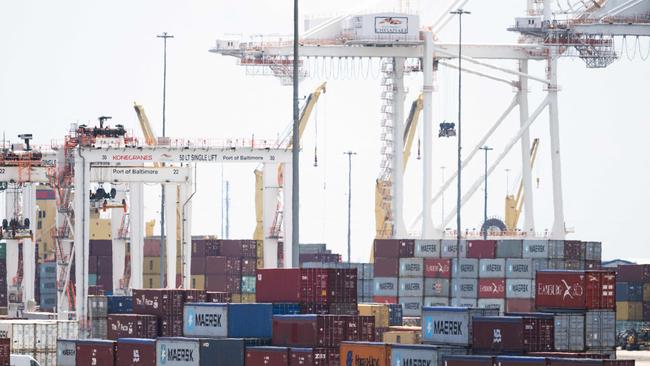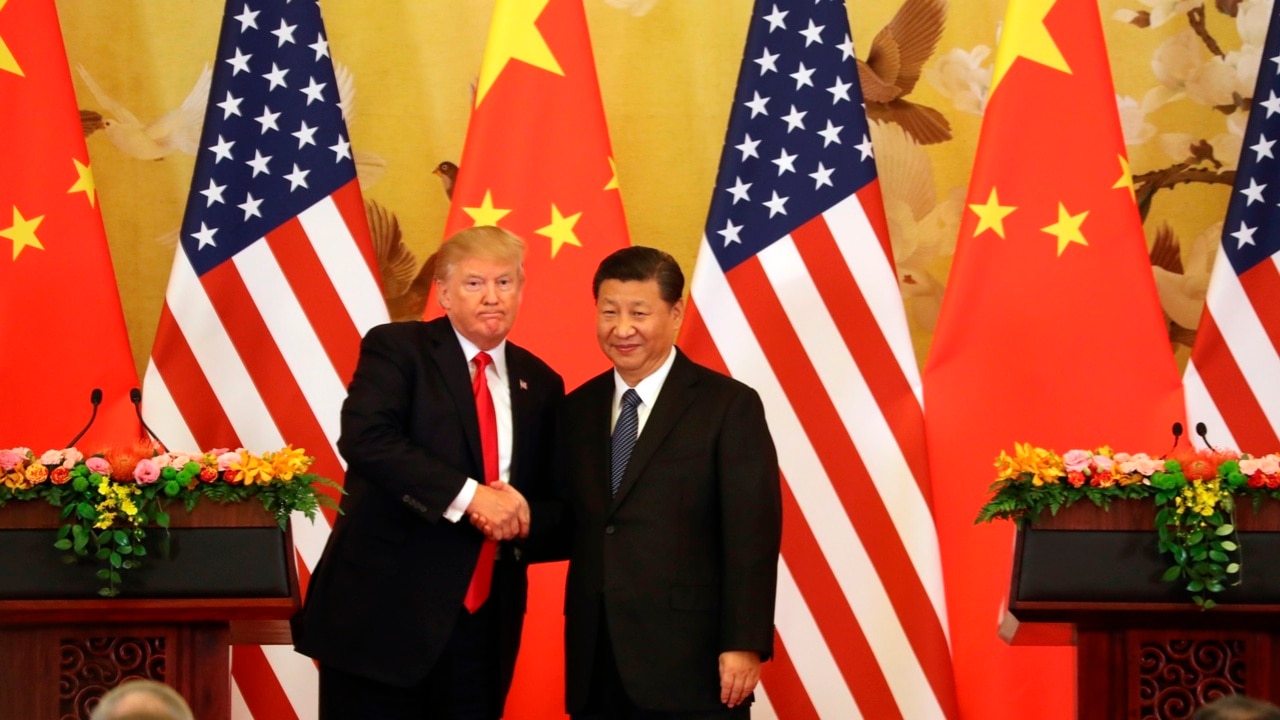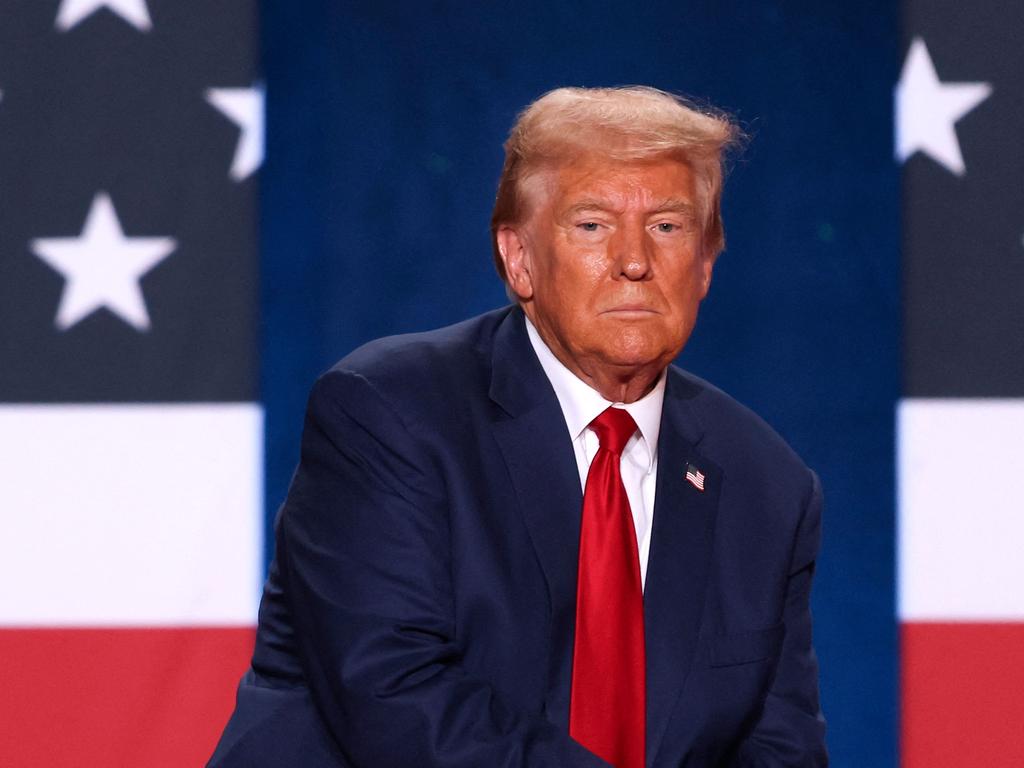Donald Trump’s tariff plan could hit US manufacturing and agriculture jobs
New modelling shows Donald Trump’s day-one plan to impose tariffs on Canada, Mexico and China would cost jobs and reduce economic growth, as Mexico warns of a trade war.

US manufacturing jobs will be lost, growth will be at least 0.3 per cent lower in 2026 and inflation at least 0.5 per cent higher in 2025 if Donald Trump slaps a 25 per cent tariff on goods from Canada and Mexico as well as a 10 per cent tariff on products from China.
Leading Australian economist Warwick McKibbin has modelled the impact of Donald Trump’s day-one tariff plan, finding that it would reduce growth in the US, Canada and Mexico while driving up inflation.
He has also found that Mr Trump’s new tariff plan would impose a major toll on domestic jobs, with total US employment forecast to be 0.5 per cent lower in 2026 than it otherwise would have been. Those working in the manufacturing and agriculture sectors would be the worst off.
The economic harm would also be greatly amplified if China, Mexico and Canada retaliated in kind by imposing the same tariffs on US products, with Professor McKibbin telling The Australian the announcement by Mr Trump was a “dangerous step for global trade.”
Professor McKibbin used the same model for a paper he co-authored for the Peterson Institute of International Economics in September.
This paper found that a 10-20 per cent across the board tariff would result in US real GDP being 0.9 per cent lower than otherwise by 2026 and, inflation rising by 1.3 percentage points above baseline in 2025 - assuming other governments responded in kind.

Mexican President Claudia Sheinbaum swiftly hit back against Mr Trump, flagging the prospect of retaliatory tariffs being imposed on US goods if the President-elect proceeded with his plans.
In a daily news conference, Ms Sheinbaum read aloud from a letter being sent to Mr Trump and warned that imposing tariffs on Mexican goods would fail to halt illegal migration or drug trafficking while only putting common businesses at risk.
She said that illegal crossings from Mexico into the United States had decreased from December 2023 to November 2024 and that migrant caravans could no longer reach the border.
Ms Sheinbaum also took aim at US defence spending, declaring that if a percentage of what the United States spent on war was “dedicated to peace and development, that would address the underlying causes of migration.”
In her letter to Mr Trump, she said it “isn’t with threats or tariffs that we resolve the migratory phenomenon or the abuse of drugs in the United States.”
“Any tariffs imposed by one side would likely prompt retaliatory tariffs, leading to risks for joint enterprises,” she said.
Ms Sheinbaum said that “cooperation and understanding” was needed to address the challenges of drugs and illegal migration.
Mexico was already taking action to address the smuggling of fentanyl into the United States, Ms Sheinbaum said, adding that the opioid crisis was “fundamentally a public health and consumption issue within your society.”
Professor McKibbin has now fed the new Trump day-one tariff plan into the PIIE model, with the results showing that everyone loses from the policy.
In 2026, Canada’s GDP would be 0.9 per cent lower, Mexico’s GDP would be 0.6 per cent lower while US GDP would be reduced by 0.3 per cent.
US employment in agriculture would be 1.5 per cent lower than otherwise but the losses in manufacturing would be even greater. Professor McKibbin found that US employment in durable manufacturing would be 2.7 per cent lower in 2026, while employment in non-durable manufacturing would be one per cent lower.
In 2025, US inflation would also be 0.5 per cent higher - meaning the tariff policy risks driving up both unemployment and inflation.
Professor McKibbin’s model has also considered another more dire economic scenario: one where retaliation is taken against the US.
The results of a 25 per cent tariff on Mexico and Canada and 10 per cent tariff on China “with retaliation of the same tariffs” would result, by 2026, in US growth being 0.6 per cent lower.

In this scenario, by 2026, Canada’s GDP would be 1.7 per cent lower while Mexico’s GDP would take a hit of 1.1 per cent.
The employment outcomes in America would also be far worse in the event of retaliation.
Under this scenario, by 2026, total US employment would be one per cent lower than otherwise but the greatest losers would once again be those employed in the manufacturing and agriculture sectors.
Professor McKibbin said that US employment in agriculture would 3.1 per cent lower while employment in durable manufacturing would 5.4 per cent lower. Employment in non durable manufacturing would be 2.1 per cent lower.

George Washington University assistant professor of economics Steven Hamilton told The Australian the level of cross border trade for North American production inputs meant the proposed day-one tariff plan would be “strongly inflationary in the short run and economically damaging in the long run.”
But he also said it showed that, for Mr Trump, tariffs were “not intended to be an across-the-board, unconditional move to raise revenue, but rather are a bargaining chip in order to extract concessions from other countries – just as they were last time.”
Spokesman for the Chinese Embassy in Washington, Liu Pengyu, issued a statement after Mr Trump unveiled his tariff plan, strongly rejecting the notion that Beijing was knowingly allowing “fentanyl precursors” into the United States. He said this ran counter to “facts and reality” and reaffirmed the Chinese position that “no-one will win a trade war or a tariff war.”
Mr Liu said that carrying out counternarcotics cooperation was “one of the important common understandings reached between President Xi and President Biden during their meeting in San Francisco in 2023.”
“The counternarcotics authorities of China and the US have resumed regular communication since the San Francisco Summit. The Chinese side has notified the US side of the progress made in US-related law enforcement operations against narcotics,” he said.
“China has responded to (the) US request for verifying clues on certain cases and taken action. All these prove that the idea of China knowingly allowing fentanyl precursors to flow into the United States runs completely counter to facts and reality.
“About the issue of US tariffs on China, China believes that China-Us economic and trade cooperation is mutually beneficial in nature. No one will win a trade war or a tariff war.”





To join the conversation, please log in. Don't have an account? Register
Join the conversation, you are commenting as Logout